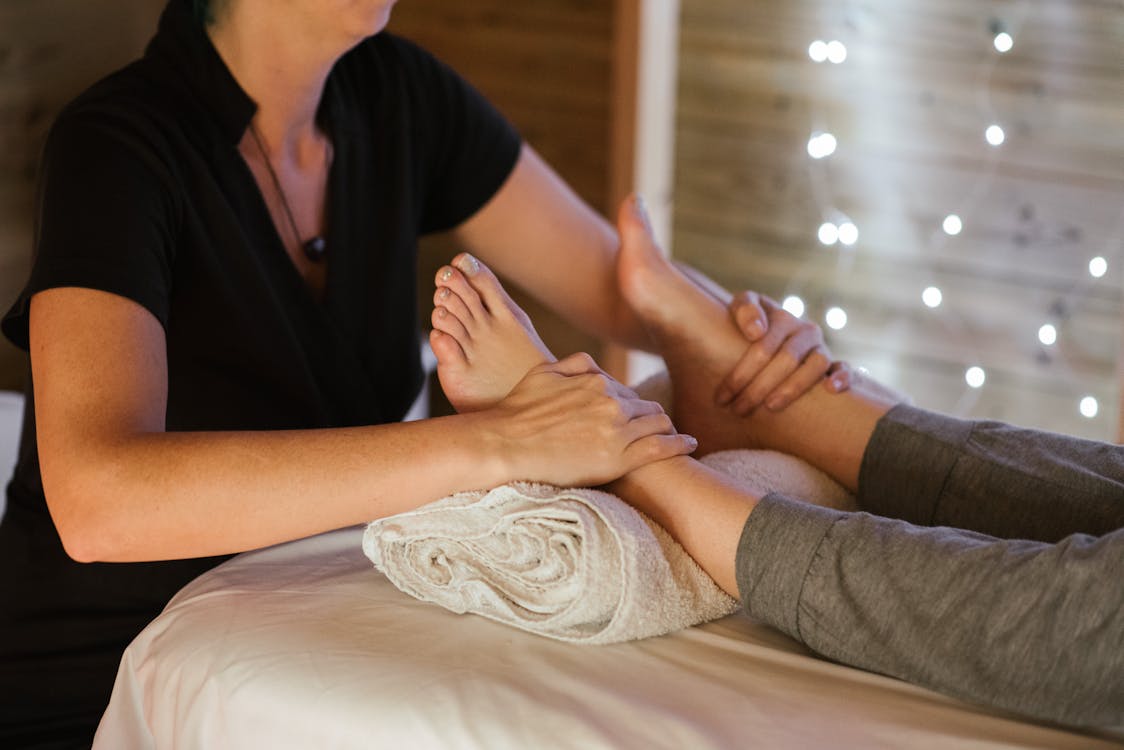Plantar fasciitis affects millions of people worldwide and causes pain and suffering in the heel and arch of the foot. Inflammation and irritation of the plantar fascia, a thick band of connective tissue that runs along the bottom of the foot, linking the heel bone to the toes, are the condition’s root causes. Plantar fasciitis is a painful condition that can be brought on by various factors, the most common of which include overuse, high-impact activities, and footwear that is not supportive enough. Massage therapy is one of the many treatment alternatives that can be beneficial and can alleviate pain significantly.
How Can Massage Treatments Help Plantar Fasciitis?
Massage therapy is a sort of manual therapy that involves the manipulation of soft tissues in the body to induce relaxation, relieve pain and muscular tension, and improve overall health and wellness. It can effectively manage plantar fasciitis by boosting blood flow to the affected area, lowering inflammation and pain, and breaking up adhesions and scar tissue.
Massage services in Las Vegas include a diverse range of techniques, each of which can be utilized as an efficient treatment for plantar fasciitis. Deep tissue massage, myofascial release, and trigger point therapy are some massage techniques that are particularly helpful for treating this disease.
· Deep Tissue Massage
Deep tissue massage focuses on the deeper levels of muscles and connective tissues in the body. This technique entails applying pressure and strokes slowly and strongly to break up adhesions and scar tissue and alleviate muscle tension. In the case of plantar fasciitis, receiving a deep tissue massage can help to relax the muscles and fascia in the foot, increasing blood flow, reducing inflammation, and relieving pain.
· Myofascial Release
Myofascial release focuses on the fascia, the connective tissue that wraps around and supports the body’s muscles and organs. This method aims to promote mobility and range of motion by releasing tension in the fascia, which is accomplished through continuous pressure and stretching. Myofascial release can treat plantar fasciitis to relieve inflammation and pain, break up adhesions and scar tissue in the foot, enhance flexibility and range of motion, and break up adhesions in the plantar fascia.
· Trigger Point Treatment
Trigger point treatment focuses on particular body areas known to be sources of tension and pain. These trigger points are frequently found in the muscles. They can potentially induce pain and discomfort in other parts of the body. It can be utilized in treating plantar fasciitis to alleviate pain and stress in the foot, and promote relaxation and healing.
Talking with your massage therapist Las Vegas about the location and severity of your discomfort when getting a massage for plantar fasciitis is crucial. It would help if you told them where the pain is coming from and how bad it is. In addition, they may enquire about any preexisting health illnesses or injuries that you have, as they may be factors contributing to your condition.
Your massage therapist may employ various hand massage techniques, such as kneading, compression, and friction, to focus on the problem area while they are performing the massage on you.

· Improves Blood Flow
Since massage helps increase blood flow to the affected area, it can assist in reducing inflammation and promoting the body’s natural healing processes. The circulation of blood brings oxygen and nutrients to the tissues, both of which are essential for the repair and regeneration of tissue. The acceleration of the healing process, the reduction of discomfort, and the improvement of mobility are benefits that can be achieved with a massage treatment.
· Relaxes the Muscles
Tense muscles in the foot and calf can worsen plantar fasciitis symptoms by adding additional strain to the tissue that is already being overworked by the condition. The use of massage therapy can assist in releasing tension in these muscles, which in turn helps to reduce strain on the plantar fascia. Massage treatment can assist in easing pain, enhancing mobility, and preventing further damage by reducing the amount of muscle tension in the body.
· Breaks Down Adhesions
Scar tissue and adhesions can form in the plantar fascia and adjacent tissues, resulting in discomfort and stiffness. Breaking down adhesions helps prevent this from happening. These adhesions can be broken down by massage techniques such as myofascial release, which also helps improve flexibility and reduce pain.
· Stimulates the Body’s Natural Healing Reaction
Massage treatment can trigger the body’s natural healing response, promoting the restoration of damaged tissues. When tissues are injured, the body reacts by increasing blood flow to the affected area and delivering nutrients to facilitate recovery. By boosting blood flow and encouraging the release of growth factors and other healing compounds, massage treatment can assist in enhancing the body’s natural ability to heal itself after injury or illness.
· Increases Range of Motion
Tightness in the foot and calf muscles can reduce the range of motion in the foot, making walking painful. The release of tension in the muscles and fascia is one of the primary goals of massage treatment, which can help to enhance the range of motion. This can help to relieve discomfort and improve function, making it easier to walk and perform other activities that are part of a normal daily routine.
Final Word
Plantar fasciitis is a prevalent condition that affects the plantar fascia and has the potential to produce pain and discomfort in the foot. Massage therapy is one of the many treatment alternatives that can help provide you with ease and comfort. If you want to experience a significant improvement in your paint, get in touch with Asian Massage2Hotel and book your appointment now.

